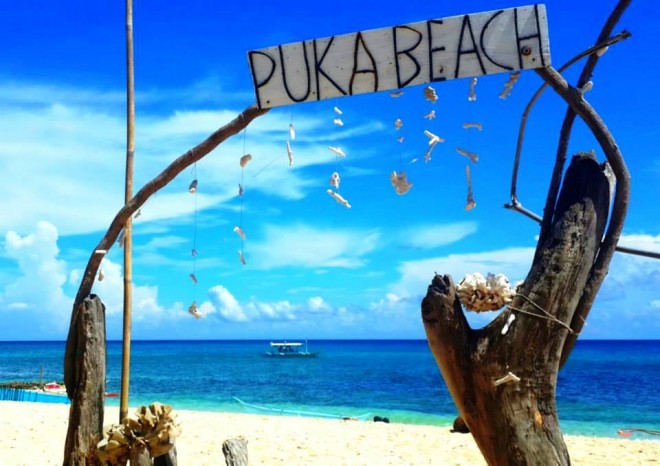Save Puka Beach, Boracay folk urge
ILOILO CITY—Willy’s Rock is one of the most visited and photographed posts on Boracay, with an image of the Virgin Mary on top of it. But on Monday night, it served another purpose for longtime residents, expatriates and business owners who have had enough of uncontrolled activities on the country’s premier tourism gem.
About 350 people assembled in front of Willy’s Rock in Barangay (village) Balabag about 6 p.m., lit candles and displayed a banner calling on the government to save the Puka Beach in the northern tip of Boracay and its wildlife. The beach is considered the island’s remaining undeveloped area and has become popular for those seeking the “old Boracay”—no structures, only white powdery sand and crystal clear waters.
“We gathered and lit candles to put a face on our online petition,” said Julia Lervik, president of the Friends of the Flying Foxes (FFF), one of the groups that initiated the candle-lighting activity and vigil. “This shows many people care. (They) are asking what they can do to help.”
Organizers also thanked the more than 10,000 supporters of an online petition demanding that the Department of Environment and Natural Resources and other government agencies create a wildlife sanctuary in Barangay Yapak, including Puka Beach (named after its Puka shells) and surrounding forest.
As of Tuesday, the petition (https://www.change.org/p/and-reaching-out-to-the-denr-local-and-national-goverment-of-boracay-island-save-boracay-s-last-remaining-wildlife-forest-and-puka-shell-beach#petition-letter) has generated 10,343 signatories since it was initiated by FFF in March.
Article continues after this advertisementFFF, a nongovernment organization, is advocating for the conservation of flying foxes, an endangered species of fruit bats and so-called because they resemble foxes with wings. Conservationists have identified three bat species in Boracay, including the Golden-Crowned Flying Fox (Aceradon jubatus), which is endemic to the Philippines but has been categorized as among the endangered species worldwide under the International Union for Conservation of Nature Red List.
Article continues after this advertisementThe population of fruit bats has declined from some 15,000 in 1986 to 2,238 bats as of April 8, 2014, the last official registered bat count, according to the petition.
Both domestic and foreign tourists have expressed frustration over the continued threats of development at Puka Beach and its nearby forests.
“Spare Puka Beach from destruction! That’s the last (little) piece of paradise left for wildlife (on) the island and for people to enjoy the feel of old Boracay,” said Sharon Padua in the online petition.
“There is a point when conservation has to be prioritized over commercialization and profit. That point was passed a long time ago (in) Boracay. Further development won’t benefit the local population or natural resources of the island. It will further deteriorate,” said Neil Winkworth from London.
“I (love) Puka beach, and don’t want it ruined with development,” said Charlene McGoohan from Dublin.
Residents have also expressed similar concerns.
“I live in Boracay and I care about preserving what is left of this paradise I have known since 1987,” Roberto Gerardo Alba said.
Marga Tansinco said the island has been their home and part of their childhood and heritage.
“We want it back to the way it was. Pure, glorious, peaceful and beautiful sanctuary for the weary, tired, and those who just want to feel nature at its best and purest! Let us take it back, give Aklanons Boracay back!!! God bless,” she said.
The petitioners are calling for an environmental summit for Boracay and Malay town, where Boracay is located.
“We demand that development must be sustainable and responsibly done in harmony with nature!” according to organizers of the vigil.
RELATED STORIES
Stop to Boracay overdevelopment sought
